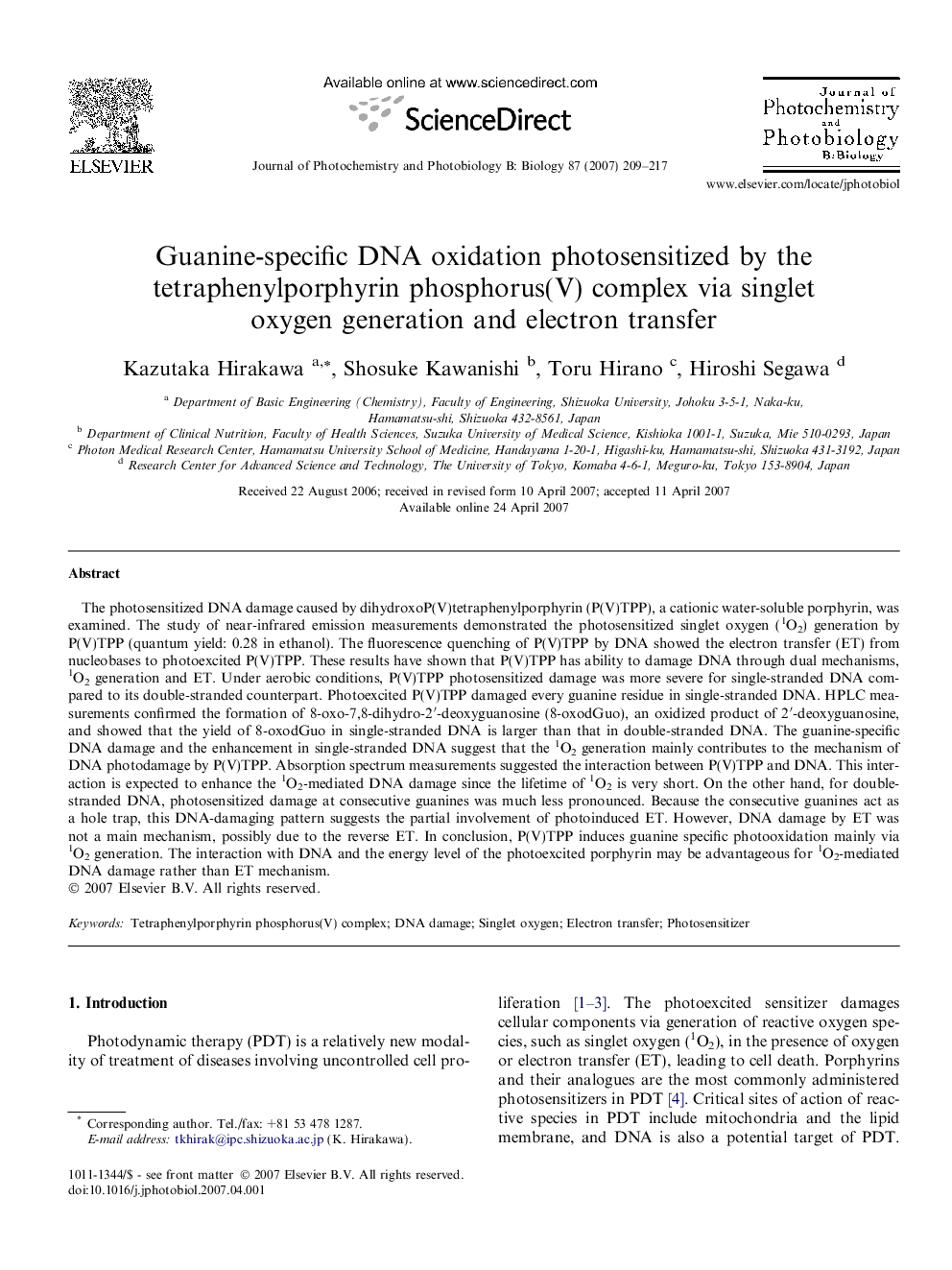| Article ID | Journal | Published Year | Pages | File Type |
|---|---|---|---|---|
| 31179 | Journal of Photochemistry and Photobiology B: Biology | 2007 | 9 Pages |
The photosensitized DNA damage caused by dihydroxoP(V)tetraphenylporphyrin (P(V)TPP), a cationic water-soluble porphyrin, was examined. The study of near-infrared emission measurements demonstrated the photosensitized singlet oxygen (1O2) generation by P(V)TPP (quantum yield: 0.28 in ethanol). The fluorescence quenching of P(V)TPP by DNA showed the electron transfer (ET) from nucleobases to photoexcited P(V)TPP. These results have shown that P(V)TPP has ability to damage DNA through dual mechanisms, 1O2 generation and ET. Under aerobic conditions, P(V)TPP photosensitized damage was more severe for single-stranded DNA compared to its double-stranded counterpart. Photoexcited P(V)TPP damaged every guanine residue in single-stranded DNA. HPLC measurements confirmed the formation of 8-oxo-7,8-dihydro-2′-deoxyguanosine (8-oxodGuo), an oxidized product of 2′-deoxyguanosine, and showed that the yield of 8-oxodGuo in single-stranded DNA is larger than that in double-stranded DNA. The guanine-specific DNA damage and the enhancement in single-stranded DNA suggest that the 1O2 generation mainly contributes to the mechanism of DNA photodamage by P(V)TPP. Absorption spectrum measurements suggested the interaction between P(V)TPP and DNA. This interaction is expected to enhance the 1O2-mediated DNA damage since the lifetime of 1O2 is very short. On the other hand, for double-stranded DNA, photosensitized damage at consecutive guanines was much less pronounced. Because the consecutive guanines act as a hole trap, this DNA-damaging pattern suggests the partial involvement of photoinduced ET. However, DNA damage by ET was not a main mechanism, possibly due to the reverse ET. In conclusion, P(V)TPP induces guanine specific photooxidation mainly via 1O2 generation. The interaction with DNA and the energy level of the photoexcited porphyrin may be advantageous for 1O2-mediated DNA damage rather than ET mechanism.
